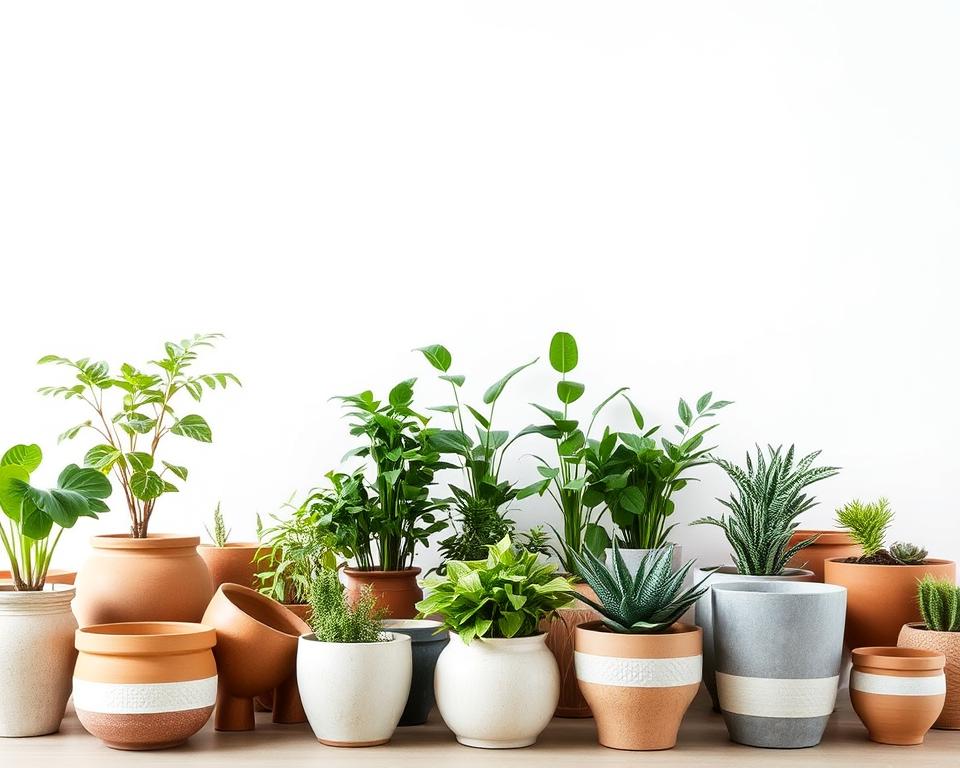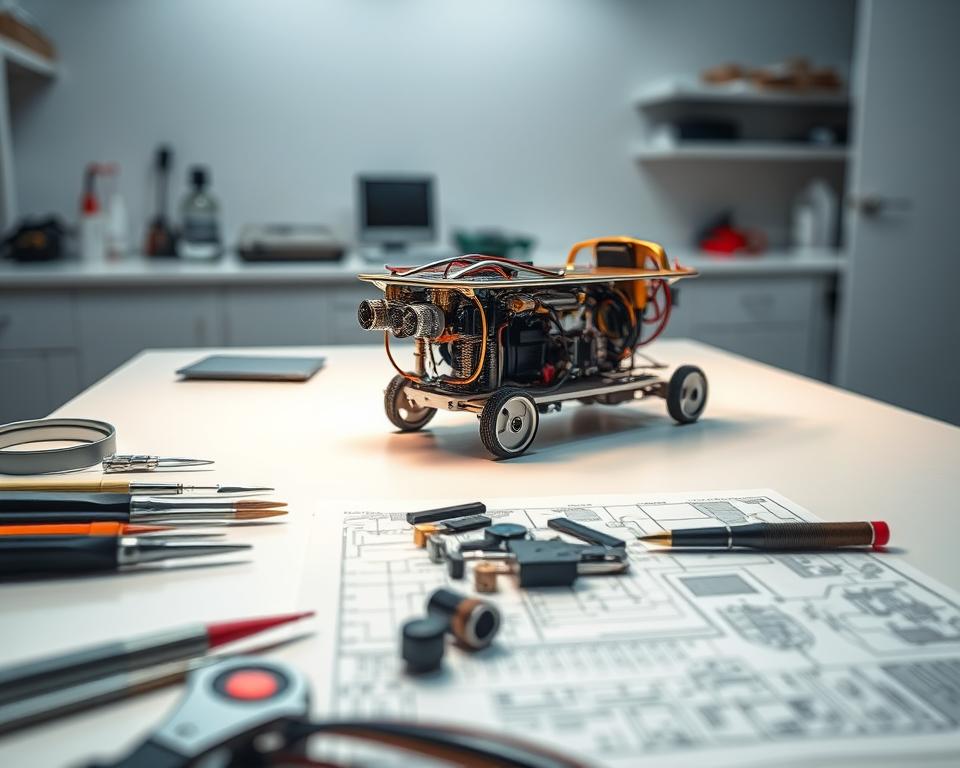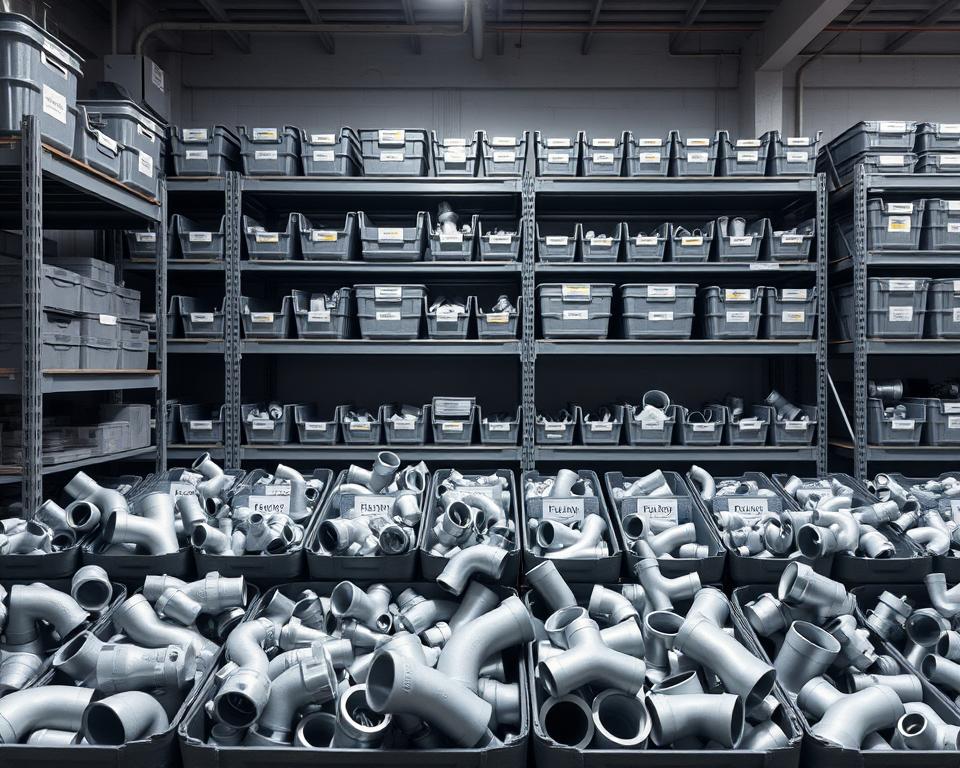Chromium Oxide Green Refractory Uses Clarified.
Are you aware that around 80% of the world’s chromium output goes into making refractory materials? Chromium oxide green, scientifically referred to as Cr2O3, is remarkable for its exceptional properties. These qualities turn it into key in high-temperature applications. It enhances strength and resistance to oxidation in numerous industries.
This discussion will examine the extensive uses of chromium trioxide in refractories. We will emphasize its role in today’s industrial landscape. Let’s find out why this multi-functional substance is so essential.
Overview of Green Chromium Oxide
Chromium oxide green is a bright green compound well-known for its adaptability and sturdiness. It is crucial in the refractory industry thanks to its special characteristics. This material doesn’t just enhancing the look of manufactured goods, but also offers notable functional benefits for demanding tasks.
In the refractory industry, chromium oxide green has a key function. It enhances the thermal endurance and toughness of products in extreme environments. This includes uses in steel manufacturing and glassworks. As companies advance, the material’s role becomes more prominent, providing answers for extreme heat applications where performance is essential.
Green chromium oxide is more than just a pigment; it’s a critical element for reliable industrial applications. Its flexibility and resilience turn it into a crucial element in the production of durable refractory materials.
Understanding Chromium Oxide and its Composition
Green chromium oxide, primarily known Cr2O3, is a compound formed from chromium element and oxygen atoms. Its structure of chromium oxide displays unique features that enhance its application across various sectors. This material’s makeup is strong and stable, delivering strength in challenging environments.
The refractory properties of green chromium oxide are exceptional in applications demanding compounds that tolerate extreme heat. It demonstrates a robust capacity to endure temperature fluctuations. This renders it ideal for smelting and various production methods where thermal energy is crucial.
Comprehending the intricacies of the makeup of chromium oxide assists sectors utilize its built-in strengths. Its ability to endure pressure improves overall performance. This positions green chromium oxide as a preferred option among thermal-resistant substances.
Significance of Chromium Trioxide in Refractories
Trioxide of chromium is essential for the performance of refractory materials because of its distinct features. It enhances the stability and long-lasting nature of these compounds in harsh environments. This insight is important for recognizing its position alongside chromium oxide in different industries.
Function of Chromium Trioxide in Enhancing Stability
Thermal-resistant substances need to tolerate high temperatures without breaking down. Chromium trioxide improves their ability to resist heat and build quality. This results in less deterioration, making it vital for industries requiring high-performance materials.
Comparative Analysis of Chromium Oxide and Trioxide of Chromium
Green chromium oxide and trioxide of chromium have unique contributions in refractory compounds. Both are key, but differ in their qualities:
| Property | Chromium Oxide | Trioxide of Chromium |
|---|---|---|
| Stability | Consistent thermal tolerance | Enhanced thermal resistance |
| Area of Use | Commonly used in refractory materials | Ideal for high-temperature environments |
| Longevity | Satisfactory resilience | Greatly improves longevity |
This comparison highlights the unique contributions of chromium oxide and trioxide of chromium to heat-resistant compounds. Their distinct properties enhance efficiency and durability in various industrial settings.
Thermal Endurance Features of Chromium Oxide Green
Chromium oxide green exhibits exceptional traits, rendering it perfect for high-temperature applications. Its fusion temperature can reach to very high heat levels, providing unsurpassed build quality in extreme conditions. This is vital for industries demanding durability, particularly in metalworking industries.
Fusion Temperature and Build Quality
Green chromium oxide is famous for its ability to endure high temperatures, important for preserving refractory structural integrity. This high-temperature resistance enables it to withstand intense temperatures without breaking down. Its ability to resist melting renders it vital in environments requiring reliability.
Role in Iron and Steel Production
In steel smelting, green chromium oxide’s thermal tolerance is invaluable. It’s often applied in heat-resistant bricks for kilns and kilns. These blocks are subjected to extreme environments and must remain intact. Chromium oxide green’s heat resistance makes them effective, boosting productivity in metalworking.
Advantages of Chromium Oxide Green in Refractory Materials
Chromium oxide green greatly boosts heat-resistant products, important for a range of industries. It boosts structural features and ability to endure oxidizing environments. These upgrades boost the lifespan and performance of refractories.
Boosting Physical Strength
Incorporating chromium oxide into heat-resistant compounds notably boosts their structural qualities. Main advantages involve:
- Enhanced toughness: Green chromium oxide’s durability boosts the longevity of substances against damage.
- Enhanced wear resistance: Its composition minimizes degradation from heavy usage, lengthening the lifespan of materials.
- Increased bending resistance: This property lets heat-resistant materials to withstand external forces, making it ideal for demanding applications.
Resistance to Oxidation in Heat-Intensive Uses
Green chromium oxide’s resistance to oxidizing conditions is vital in high-temperature environments. The gains are:
- Increased durability: Refractories endure more, withstanding harsh environments.
- Improved functionality: They suffer less damage, maintaining consistent output in industries.
- Lower maintenance costs: Less frequent replacement of components cuts costs for refractory-dependent operations.
These chromium oxide green benefits boost the durability of heat-resistant materials and encourage sustainable use. They increase the longevity of materials and minimize environmental impact.
Understanding the Uses of Chromium Oxide Green in Refractories
Green chromium oxide has proven vital in various fields thanks to its distinct properties. It performs well in different industries, from metal manufacturing to ceramics manufacturing. Its function as a critical component in thermal-resistant products shows its value.
Industrial Uses
Green chromium oxide is vital in various fields for enhanced functionality. Here are the main industries and their particular applications:
- Metal Manufacturing: It’s used in producing heat-resistant bricks and castables, ensuring temperature durability and resistance to wear.
- Glassworks: In thermal-resistant linings, it helps maintain intense heat and provides resistance to chemical reactions.
- Pottery Production: As a colorant in glazes, it adds color, durability, and build quality.
- Concrete Manufacturing: It enhances the features of refractory materials for intense thermal applications.
Multiple Applications of Refractory Materials
Chromium oxide green’s flexibility isn’t limited to individual sectors. Its applications cover a vast array, such as:
- High-performance refractory bricks
- Castable refractories for challenging settings
- Anti-corrosive refractory coatings
- Ceramic materials requiring thermal durability
This broad application spectrum demonstrates chromium oxide green’s key role in boosting production effectiveness. Its unique qualities enable companies adapt to current manufacturing needs, promising better performance and long-lasting products.
Key Industrial Uses of Chromium Oxide Green
Chromium oxide green is crucial in multiple sectors, famous for its versatility and performance. It is mainly used in the sector of refractories, enhancing thermal stability and structural integrity. This substance is essential in materials developed for extreme conditions.
In the creation of heat-resistant bricks and inner linings, green chromium oxide stands out. These materials are vital in high-temperature settings like kilns, furnaces, and burning devices. Adding chromium oxide green enhances their effectiveness, ensuring they endure more and work reliably.
- Ceramics Manufacturing: Chromium oxide green is vital in clay-based products, enhancing color stability and build quality.
- Metallurgy: It is applied in metallurgy for tools and components needing high thermal resistance.
- Glass Production: In glass production, chromium oxide green delivers the longevity of glassmaking chambers.
This compound is important not just in traditional uses but also in innovative materials. The drive for energy-efficient solutions is encouraging its adoption in modern refractory materials.
As industries focus on efficiency and effectiveness, green chromium oxide proves indispensable. Its broad field of applications shows its value across multiple fields. This proves its significance in the modern refractory industry.
Methods of Producing Chromium Oxide Green
The production of chromium oxide green uses several established techniques, each with distinct benefits and drawbacks. These techniques are important for creating pure green chromium oxide, essential for its varied uses. Techniques such as combustion, hydrothermal, and precipitation are key in creation and output reliability.
Standard Production Techniques
Several common preparation methods are used in chromium oxide green creation. These comprise:
- Burning Technique: This method entails the combustion of chromium salts with organic materials. It is productive and has a reduced impact on the environment.
- Water-Based Technique: This technique uses the interaction of chromium oxides in an liquid phase under high pressure and heat. It produces high-purity products.
- Precipitation Method: This method requires the precipitation of chromium oxides from water-based suspensions. It permits management over particle size and structure.
Each method offers unique advantages, such as financial benefits and ability to scale, but also presents challenges like refinement and size inconsistency. Choosing the appropriate process strongly influences the final product’s properties and its effectiveness for specific applications.
Ensuring Quality in Manufacturing
Ensuring product quality is crucial in the creation of green chromium oxide. It ensures the final product adheres to required norms for purity and consistency. Key factors to monitor are:
- Regular testing of base substances to maintain material quality for green chromium oxide production.
- Control of manufacturing conditions, such as thermal levels and force, during the multiple production processes.
- Final product testing for chemical composition and physical properties, guaranteeing adherence with required norms.
Good production oversight methods improve the trustworthiness and efficiency of chromium oxide green for its wide-ranging roles. This emphasizes the significance of these manufacturing processes in the complete manufacturing system.
Sustainable Methods for Producing Chromium Oxide Green
The movement toward green practices is changing the production of chromium oxide green. Eco-conscious efforts is now a top concern as companies look for ways to reduce emissions. By incorporating sustainable practices, they cut down on pollutants and conserve materials.
Integrating sustainability into the manufacturing of green chromium oxide meets both legal standards and market expectations. Manufacturers are now increasingly mindful of their effects on the planet. By using advanced processes, they enjoy benefits such as:
- Using waste materials in production, which cuts down on the need for new resources.
- Enhancing production efficiency in creating products.
- Enhancing recycling practices to reduce ecological impact.
Chromium oxide green’s sustainable use is also evident in different fields. For instance, it plays a key role in emission reduction systems, lowering harmful emissions. This proves the vital role of environmental responsibility in the refractory industry.
| Practice | Overview | Environmental Benefit |
|---|---|---|
| Material Use | Utilizing by-products in creation | Reduces demand for raw materials |
| Energy Use | Methods to improve power efficiency | Minimizes carbon footprint |
| Emission Reduction | Installation of advanced filtration systems | Minimizes environmental contamination |
| Waste Management | Optimizing waste recycling processes | Decreases environmental contamination |
As companies focus on sustainability, the manufacture of green chromium oxide and use become crucial. They show how green practices and innovation can collaborate, leading to a more sustainable future.
Exploring Future Development in Refractory Applications
The domain of heat-resistant material use is poised for major changes, notably with progress in green chromium oxide use. As sectors focus on sustainability, the next phase of this substance becomes increasingly crucial.
Emerging technologies are pushing the boundaries in the use of green chromium oxide, which may involve:
- Better temperature endurance for improved durability in harsh environments.
- Advanced mixtures that increase its role in iron and steel industries and pottery.
- Next-generation production processes to reduce environmental impact while keeping high standards.
The incorporation of green chromium oxide into next-generation refractories ensures strong results for multiple fields. Relentless R&D can utilize this material’s unique properties. This promises it remains crucial in modern heat-resistant products.
By embracing these advancements, sectors can boost the efficiency and sustainability of their heat-resistant materials. This guarantees a future of green chromium oxide very promising.
Summary
Chromium oxide green is a key compound that boosts the longevity and effectiveness of refractory products across various fields. Its unique features, such as high-temperature resistance and oxidation stability, are crucial for the steel industry and ceramics industries.
The analysis of chromium oxide green’s roles demonstrates its versatility and importance in current industrial needs. Continued advancements in the creation of products expand its possibilities, promising it continues to be essential for reliable applications.
As the push for sustainable manufacturing expands, chromium oxide green’s role is poised to grow. Its use in developing green heat-resistant products demonstrates its key function in the future of the refractory market. This ensures improved performance and productivity in a constantly developing industrial field.



